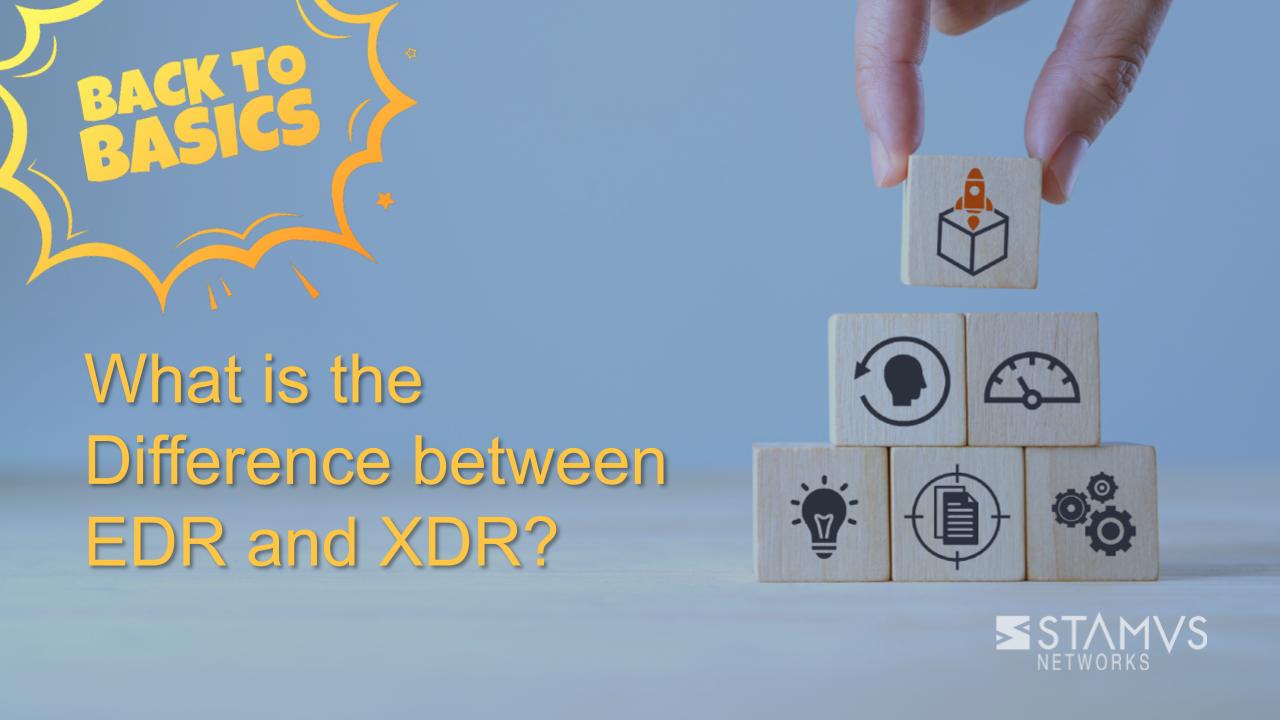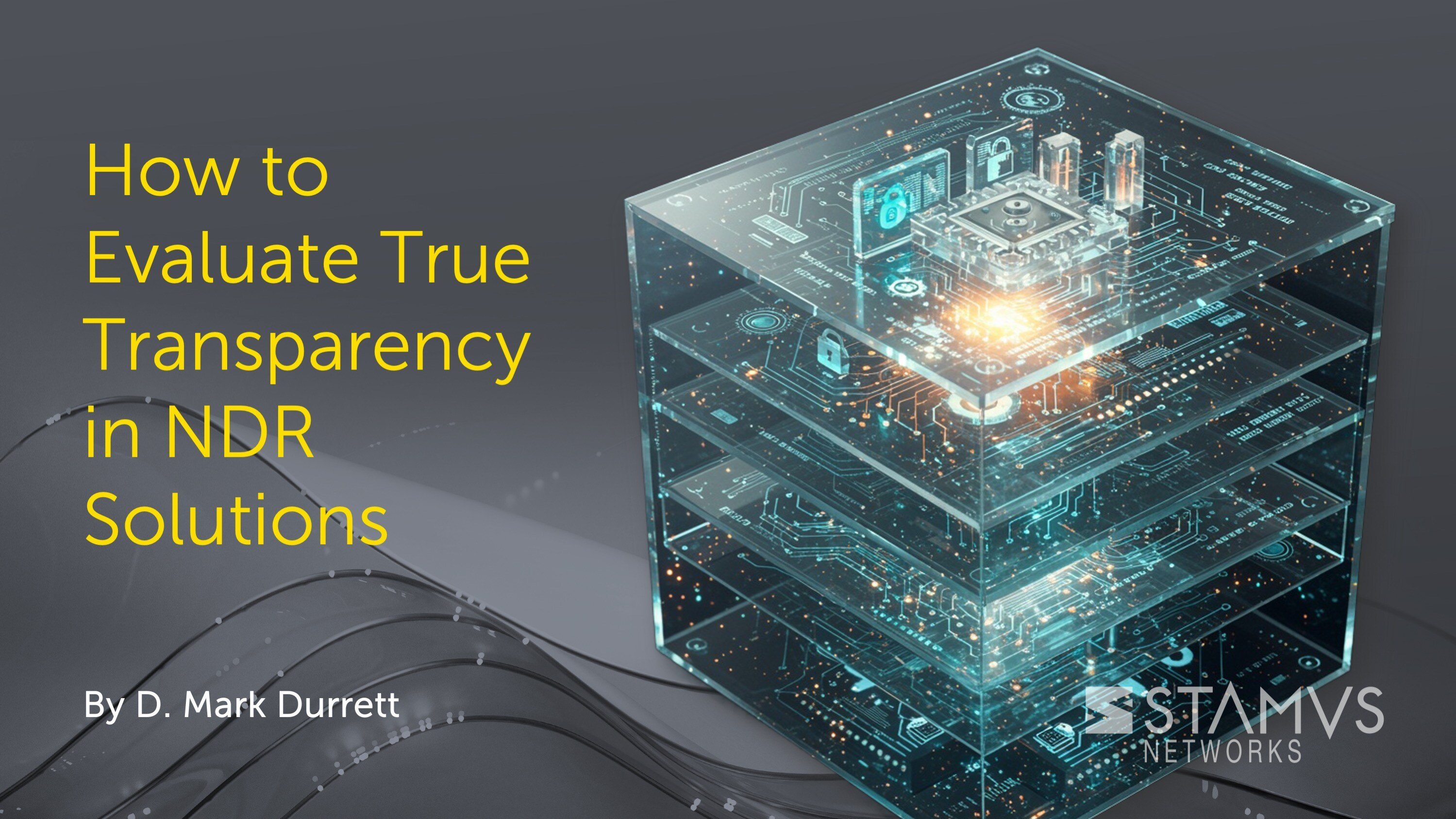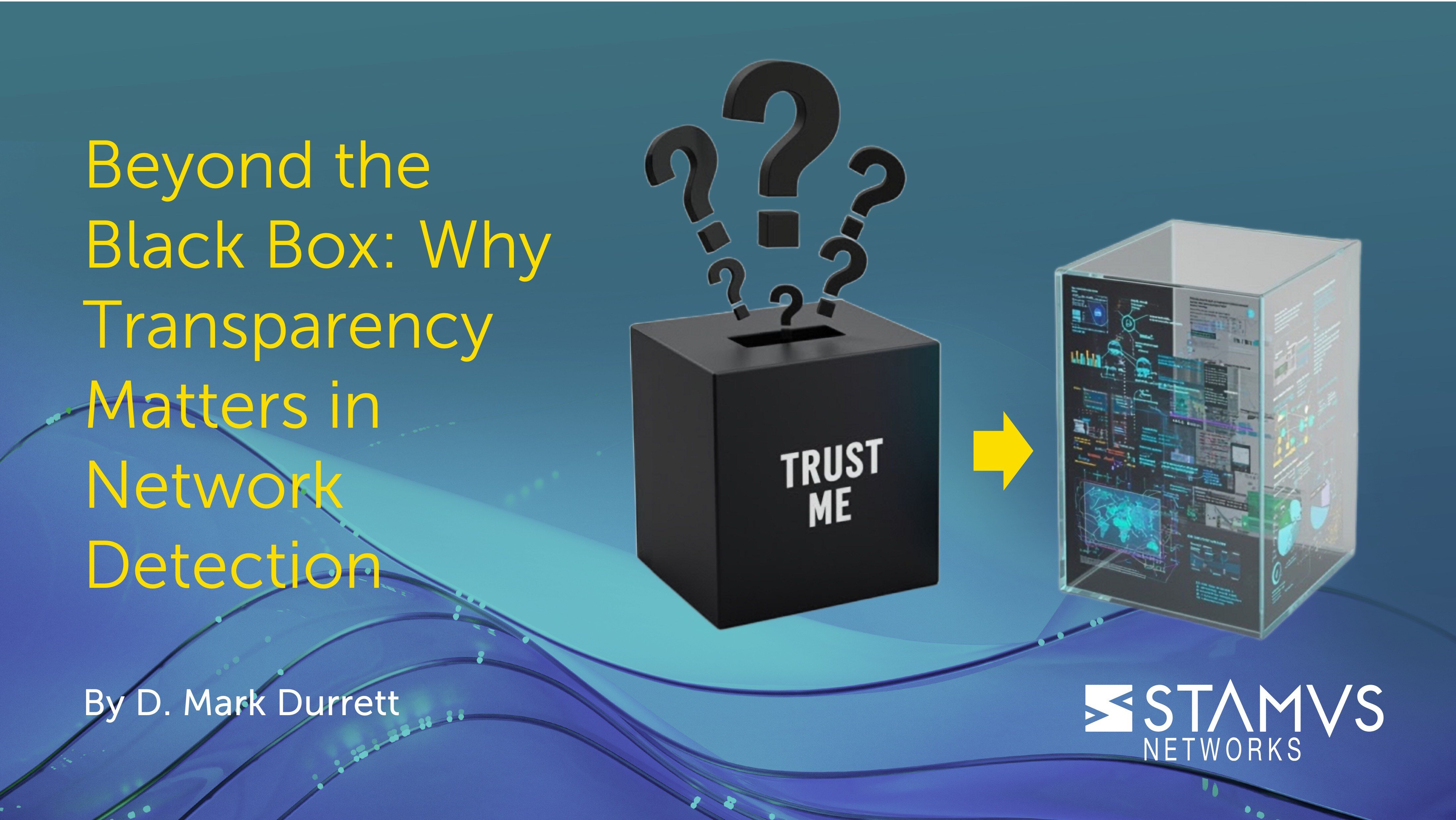If you’ve been keeping up to date with the Stamus Networks blog, then you are likely well acquainted with network detection and response (NDR). However, understanding network detection and response tools is only part of the threat detection and response puzzle. It is important to also understand EDR and XDR to evaluate the best NDR solutions and determine which combination of systems is best for your organization. Let’s look at EDR and XDR, and discuss how integrating these two systems with network detection and response can benefit your organization.
What is EDR?
EDR, which stands for endpoint detection and response, is a cybersecurity approach that focuses on monitoring individual devices to detect and respond to threats. Agents must be used with EDR, meaning organizations must install an endpoint application on each device (laptops, desktops, servers, mobile devices, etc.) to see the activity originating from that device. The endpoint agent relays this data back to EDR solutions to monitor for suspicious activities, malware, or other malicious processes that have infiltrated the endpoint.
When threats are detected by EDR solutions, the system is usually able to initiate response actions such as quarantining the device. When integrated with other systems, the threat might be detected through other means but EDR solutions can typically still trigger this type of response action.
What is XDR?
XDR, which stands for extended detection and response, is a still developing category in threat detection and response systems. Because it is so new, there is not a single definition that encompasses all XDR systems. XDR vendors usually advertise a product that claims to combine multiple telemetry sources, including the network, endpoints, cloud, servers, and more under a single system that can analyze the data from all sources to detect and respond to security threats.
Many, but not all, XDR systems are essentially an expansion of SIEM (security information and event management) and SOAR (security orchestration, automation, and response) systems paired with additional correlations and analytics. Other XDR systems evolved by taking existing EDR or NDR solutions and adding additional telemetry sources and some are basically a suite of products from a single vendor packaged under one license.
What is the difference between EDR and XDR?
The difference between XDR vs EDR is primarily in their scope. Endpoint detection and response (EDR) focuses on monitoring and securing individual endpoints, providing visibility and response actions at the endpoint level. Extended detection and response (XDR) extends its scope to provide cross-environment visibility, integrating data and responses across networks, endpoints, and cloud services in an effort to provide a more comprehensive and unified approach to threat detection and response. XDR security is broader and more holistic, while EDR solutions are specifically tailored to endpoint security.
Some organizations choose XDR security systems because they prefer to unify their telemetry sources under a single banner, while others opt to use an EDR and integrate it with other best-of-breed security solutions.
What is XDR vs EDR vs NDR?
XDR, NDR, and EDR solutions are all very capable cybersecurity systems that enable organizations to detect and respond to potential threats and malicious activities. While each has its merits and limitations, ultimately it is up to your organization to decide which system or combination of systems fits best in your environment and will provide you with the best defense against the threats you face.
We recommend integrating all three systems if possible to ensure the most comprehensive security strategy possible. However, if your organization can only select two then we believe integrating NDR with EDR products will provide the best results with the most flexibility. NDR provides comprehensive insights and optimum visibility at the network level while still ensuring coverage for devices that cannot install an endpoint agent. EDR products provide device-specific data while expanding on the incident response capabilities of NDR.
Many XDR vendors will claim that their solution can do anything an EDR/NDR integration can do, however this will come at the risk of vendor lock-in and “weakest link” syndrome, where the entire system is only as effective as its least-effective component. XDR is simply not mature enough as a product category to outperform the specialized monitoring performed by EDR and NDR.
Building a comprehensive cybersecurity strategy
There are several benefits to integrating multiple systems to create a comprehensive cybersecurity strategy, including:
- Enhanced threat visibility
- Advanced threat detection
- Proactive threat hunting
- Efficient incident response
- Compliance and Reporting
- and more
To learn more about XDR, EDR, NDR, and how these three solutions come together to form a comprehensive security strategy, read our whitepaper “EDR, NDR, and XDR: Exploring Three Approaches to Threat Detection and Response”.
To be notified of new blog posts and other news, make sure to subscribe to the Stamus Networks blog and the Stamus Spotlight Monthly Newsletter, follow us on Twitter, LinkedIn, and Facebook, or join our Discord.






